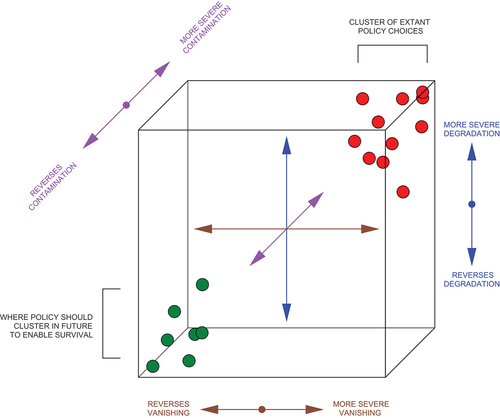Figures & data
Figure 1. Estimated world human population, 10,000 BCE – 2021 CE. (License: CC-BY).

Figure 2. A visual representation of the SEDCOV rough litmus test for state actions, for use by non-scientist national security practitioners and adjacent expert communities. (Diagram designed by author, and executed and enhanced by Adie Mitchell, Princeton School of Architecture).

